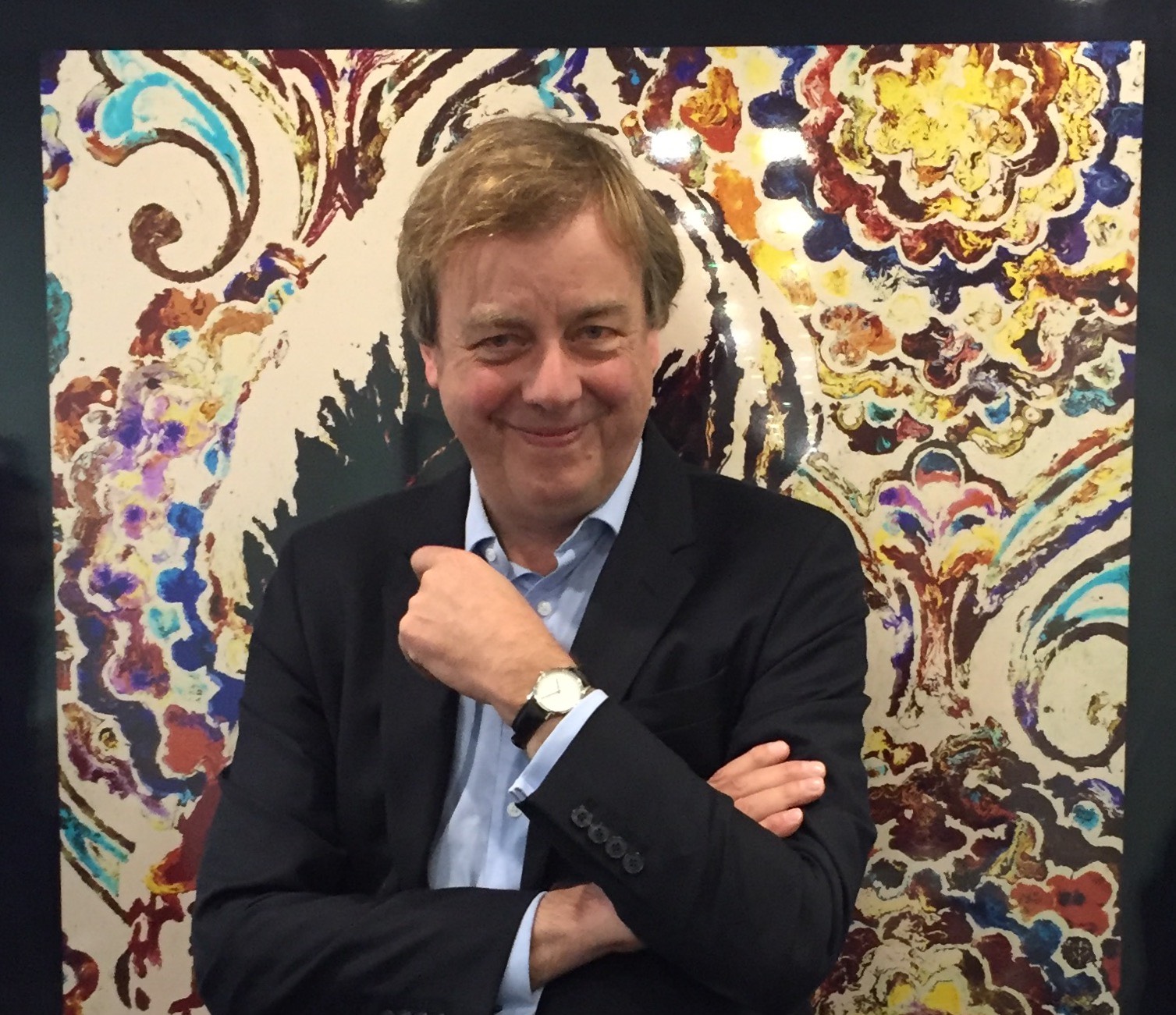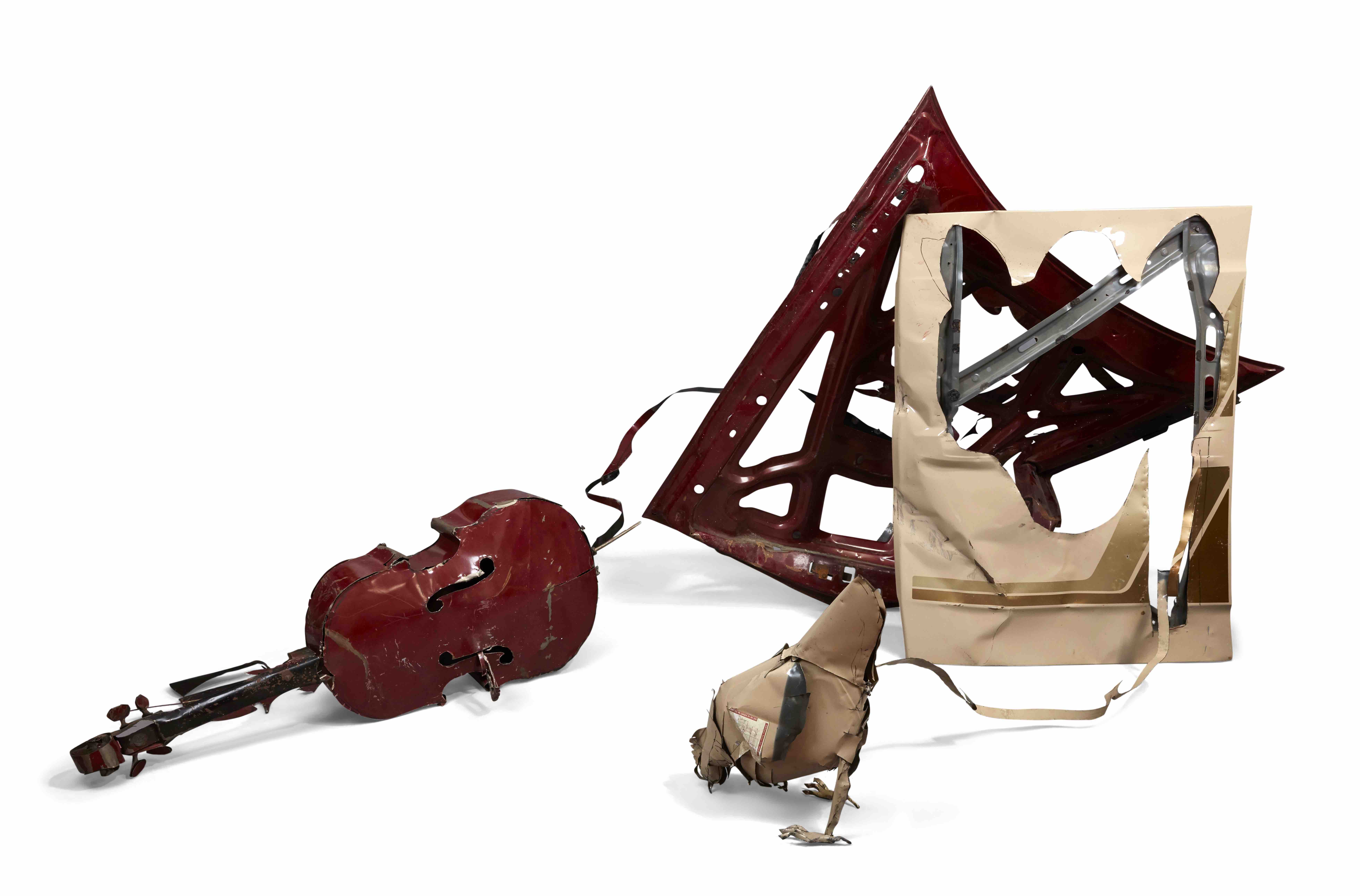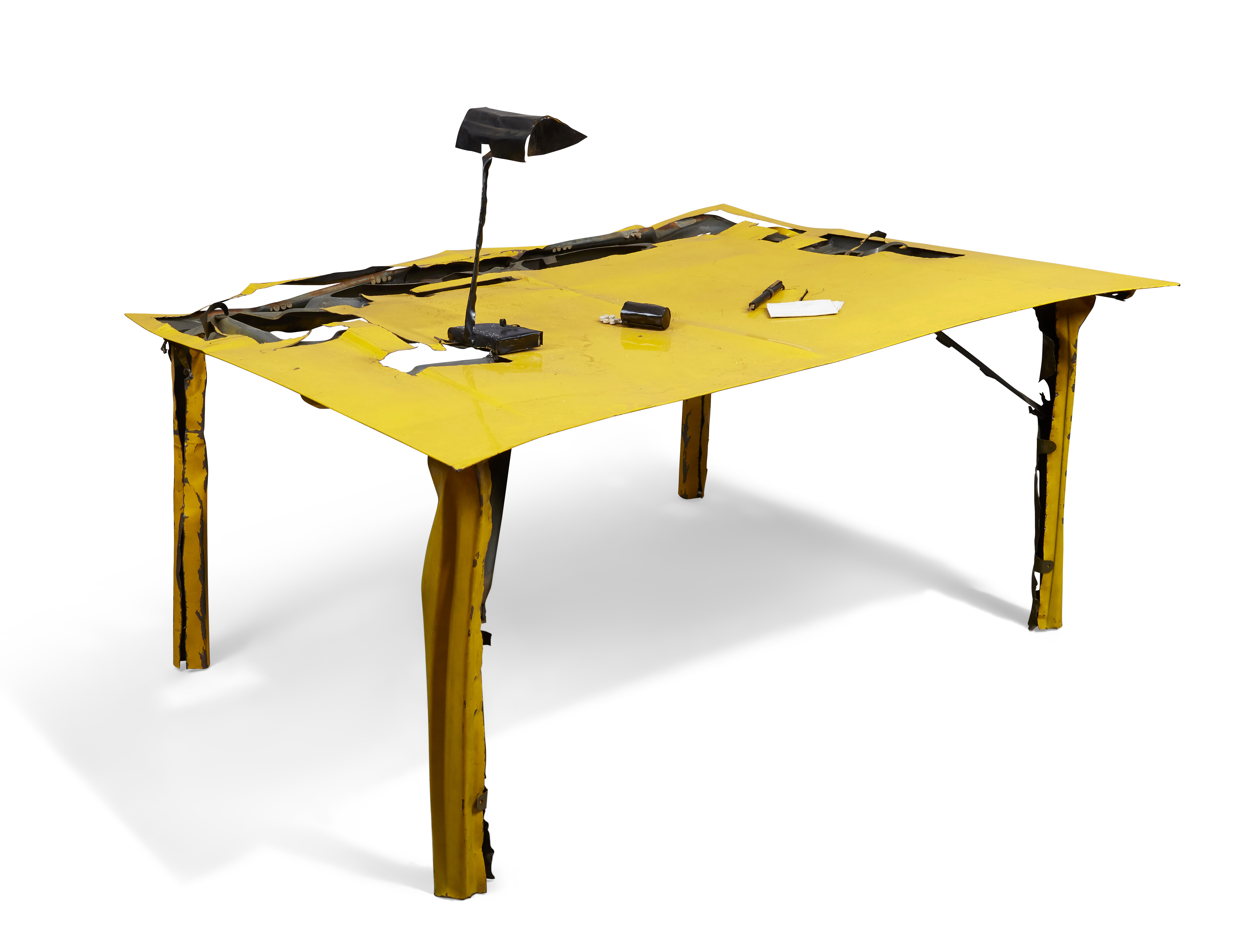We are very fortunate to be selling a group of works by British artists from the collection of Saatchi & Saatchi, London that were originally part of the Saatchi Collection (lots 429-441). These works were featured in the book New British Art in the Saatchi Collection, Thames & Hudson, 1989, by Alistair Hicks, and include Julian Opie (lot 430-433), Stephen Buckley (lot 442-443), Grenville Davey (lot 429) and Bill Woodrow (lot 434-441). Many have not been seen for over a decade.
We sat down with Alistair Hicks to reflect on the collection. Hicks is an art curator and writer, whose publications include a survey of contemporary art, The Global Art Compass: New Directions in 21st Century Art. He was the Senior Curator at Deutsche Bank for 20 years and regularly contributes to The Financial Times, Apollo Magazine and Frieze Magazine.

- What are your memories of the works and the artists during the 1980s?
We called them the New British Sculptors then – not very original – but they were taking the world by storm and of that group Anish Kapoor, Tony Cragg and Julian Opie have all maintained that momentum to stardom, but at the time the leader of the pack, or at least joint leader was Bill Woodrow. While Cragg’s examination of our relationship with the environment may have been more scientific at that stage, Woodrow found a magic soft spot. It is hard to be funny in solid three dimensional works, but he mocked his very own medium. He knocked it off its pedestal. His use of discarded rubbish had a similar power to such pioneers as Schwitters and Picasso, but Woodrow seemed the more natural joke teller.
Lot 434, Bill Woodrow RA, Cello/Chicken, 1983
- How did you come to write this book?
Charles Saatchi was the perfect patron. He asked me to write New British Art in the Saatchi Collection (1989) after reading some of my articles in The Times and The Spectator and then kindly re-negotiated my fee that Thames & Hudson were offering up four times.
Lot 432: Julian Opie, British b.1958 - G, 1987
- What impact did these artists have on contemporary art?
Not every artist Charles Saatchi bought climbed the art market pinnacle, but in the 1980s Saatchi was almost too powerful for his own good. The London contemporary market was really in its infancy and Saatchi, The School of London artists and the belated rise and rise of Francis Bacon and his entourage, the School of London, dragged London into a central position, but the market was so small that if Saatchi sneezed London sneezed with him. He was able to buy artists that few others had heard off such as Grenville Davey and put them in the Boundary Road central stage. Saatchi was accused of manipulating the art market. Everyone who saw his ads knew he was a good manipulator, and some attacked him for it. Looking back one can see that he was a big force in helping the art world to where it is now. Some like his influence: others hate it. I am grateful for that energy he gave us all.
Lot 429, Grenville Davey, Quad, 1988
- What does it feel like to see them, over three decades later?
Thirty years later it still brings a smile to my eyes when I see the chicken and cello made from car bonnets. You can still feel you can hear the chicken clucking while it pecks hopefully at the ground and the sad notes of the abandoned cello, both of which are still connected by their umbilical chords of their mother, the mighty all destructive automobile. As for Table, 1983, it is a table of our times. We have moved far from the Platonic ideal table; this is how we casually manipulate things around us. Inventiveness yes, respect?








